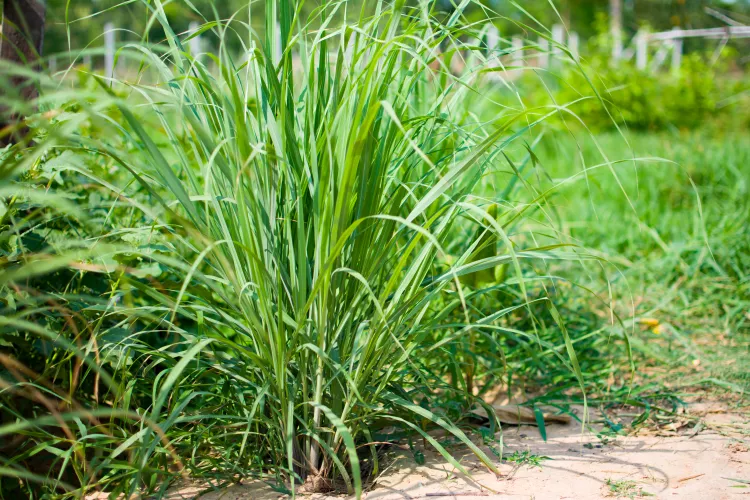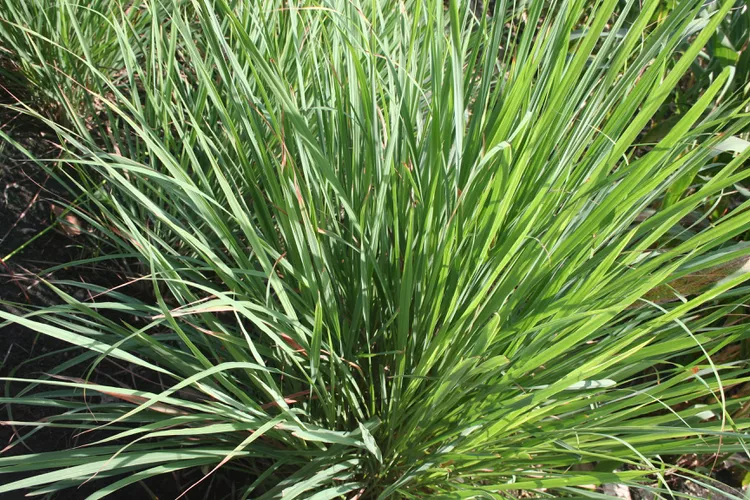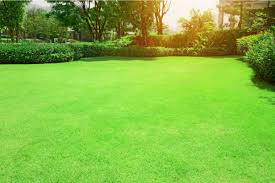Lemongrass: The Best Herb for Your Garden and Kitchen
Lemongrass (Cymbopogon citratus) is a tropical herb known for its distinct lemon flavor and fragrance. Often used in cooking and herbal teas, it’s also a favorite in gardens for its ornamental beauty and ability to thrive in a variety of conditions. Whether you’re a culinary enthusiast or looking to add a fragrant touch to your landscape, lemongrass is a versatile and easy-to-grow plant.
What is Lemongrass?
Lemongrass is a tall, perennial grass that originates from Southeast Asia. It has long, narrow leaves with a vibrant green color and a lemony scent, hence its name. It can be grown in both tropical and subtropical climates, although it can also be cultivated indoors in cooler climates.
In cooking, its stalks are often used to infuse flavor into broths, curries, and teas. The leaves and essential oils are also prized for their aromatic qualities in perfumes, soaps, and aromatherapy.
Lemongrass Plant Overview:
- Common Name: Lemongrass
- Botanical Name: Cymbopogon citratus
- Family: Poaceae
- Plant Type: Perennial grass
- Mature Size: 3 to 6 feet tall, 2 to 3 feet wide
- Sun Exposure: Full sun to partial shade
- Soil Type: Well-draining, rich soil
- Soil pH: Slightly acidic to neutral
- Bloom Time: Late summer to early fall (though typically not grown for its flowers)
- Flower Color: White to purple
- Hardiness Zones: 8-10 (USDA), grown indoors in cooler zones
- Native Area: Southeast Asia

Why Grow Lemongrass?
- Culinary Uses: Lemongrass is a common ingredient in Thai, Vietnamese, and other Southeast Asian cuisines. Its flavor is citrusy with hints of ginger, making it perfect for flavoring teas, soups, curries, and marinades.
- Aromatic Qualities: The plant’s lemony scent is naturally refreshing. It’s often used in essential oils, perfumes, and as a natural insect repellent.
- Easy to Grow: Lemongrass is relatively low-maintenance once established. It thrives in full sunlight and well-drained soil, requiring only moderate watering.
Lemongrass Care:
1. Light Requirements
Lemongrass grows best in full sun, but it can tolerate partial shade in hotter climates. The more sunlight it receives, the more robust and flavorful the plant will be.
2. Soil Needs
Lemongrass prefers well-draining, rich, slightly acidic soil. It’s a heavy feeder, so adding organic compost or well-rotted manure to the soil can help it grow to its full potential.
3. Watering
Lemongrass needs regular watering but does not like to be waterlogged. The soil should be kept moist but not soggy. If you’re growing it in containers, ensure that the pot has proper drainage to prevent root rot.
4. Temperature & Humidity
Lemongrass thrives in warm temperatures, ideally between 70°F and 85°F (21°C – 29°C). It can tolerate light frost but will need to be brought indoors if temperatures drop below freezing. In colder climates (zones 7 or lower), it can be grown as an annual or brought indoors during the winter.
5. Fertilizing
Lemongrass benefits from regular feeding, especially during the growing season. Organic fertilizers like compost or well-aged manure work well. Avoid over-fertilizing, as this can lead to excessive leaf growth with less flavor in the stalks.
How to Grow Lemongrass:
1. Starting from Seeds
Although lemongrass can be grown from seed, it’s typically easier to propagate from cuttings or starter plants. If you do choose to start from seed, soak them in water for 24 hours before planting them in seed trays filled with a well-draining potting mix. Keep the seeds in a warm spot, and they should germinate within 2-3 weeks.
2. Growing from Cuttings
A more reliable method is propagating lemongrass from cuttings. You can easily grow lemongrass from a stalk purchased from the grocery store:
- Cut a fresh stalk from a store-bought lemongrass bunch, leaving a few inches of stem.
- Place the cut end in a glass of water, making sure it’s submerged. Change the water every few days.
- After 1-2 weeks, roots should begin to form. Once the roots are about 2 inches long, you can plant the cutting into soil.
3. Planting Outdoors
Once the lemongrass has established roots, it can be transplanted outdoors in well-drained soil. Space plants about 2 feet apart to allow them to grow to their full size. In colder climates, you can plant lemongrass in pots so it can be brought inside during the winter months.
Harvesting Lemongrass:
Lemongrass can be harvested once the plant has reached a height of 12 inches or more. Here’s how to do it:
- Select Mature Stalks: Choose thicker, mature stalks that are at least 1/4 inch in diameter.
- Cut the Stalks: Use a sharp knife to cut the stalks at the base, close to the soil.
- Remove the Outer Leaves: The outer leaves of the stalk can be tough, so remove them and only use the tender, inner sections.
- Regrowth: After harvesting, the plant will regrow from the base, and new shoots will emerge.
You can also grow lemongrass indoors in pots, placing it on a sunny windowsill, where it will continue to thrive year-round.
Common Problems with Lemongrass:
1. Pests
Lemongrass is relatively pest-resistant but can sometimes attract aphids, spider mites, and whiteflies. If you notice small, discolored patches on the leaves, check for pests and treat with insecticidal soap or a strong spray of water.
2. Root Rot
Lemongrass can develop root rot if overwatered or planted in poorly draining soil. Ensure your plant has good drainage, and avoid letting it sit in water for long periods.
3. Frost Damage
Lemongrass is frost-sensitive and will die back if exposed to freezing temperatures. In cooler climates, either grow it as an annual or bring it indoors before the first frost.
Lemongrass Varieties:
While Cymbopogon citratus is the most commonly used variety for culinary purposes, there are a few other species of lemongrass that are used in different regions and for various purposes:
- Cymbopogon nardus (Citronella Grass): This variety is grown primarily for its essential oils, which are used in citronella candles for repelling mosquitoes.
- Cymbopogon flexuosus: Known for its high-quality oil, often used in perfumery and aromatherapy.
FAQ: Lemongrass Quick Tips
Can Lemongrass be Grown Indoors?
Yes! Lemongrass grows well indoors in a pot, as long as it gets plenty of sunlight. Place it on a sunny windowsill, and water regularly.
How Often Should Lemongrass Be Harvested?
You can harvest lemongrass as soon as the stalks are thick enough to be cut. It’s best to harvest from the outer stalks first, allowing the plant to continue growing from the center.
Is Lemongrass Frost-Tolerant?
No, lemongrass is not frost-tolerant. If you live in a colder climate, bring the plant indoors during the winter months or grow it as an annual.
Conclusion
Lemongrass is a wonderful herb to add to your garden or kitchen. It’s not only a fragrant and attractive ornamental plant, but it also serves as a valuable culinary and medicinal herb. With its easy-to-care-for nature and versatility, lemongrass is a great choice for both beginner and experienced gardeners. Whether you’re using it to flavor soups and teas or simply enjoying its tropical beauty, lemongrass is sure to be a standout in your garden!




